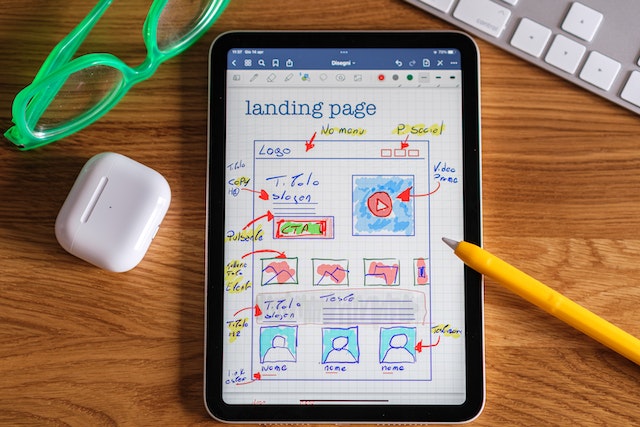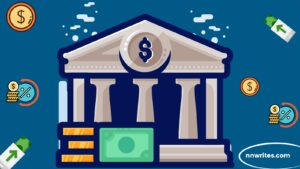web designing
A well-designed website has become a crucial tool for organizations and people to develop their online presence in today’s digital world. The creative process of conceptualizing, organizing, and putting into action the aesthetic and practical elements of a website is known as web design. We will dig into the realm of web design in this blog, looking at its fundamental components, guiding concepts, and the abilities needed to produce engaging online experiences.
1- Understanding Web Design:
User experience (UX) design, front-end programming, graphic design, and other fields are all included in web design. It entails both the artistic and technological facets of website design, providing a perfect marriage of aesthetics and usability.
2- Core Elements of Web Design:

i. Layout:
The arranging of components to produce an aesthetically appealing and user-friendly framework, including text, graphics, and navigation.
ii. Color:
The strategic use of hues to arouse feelings, communicate a brand’s identity, and improve readability and visual hierarchy.
iii. Typography:
The choice and configuration of fonts, font sizes, and line spacing to ensure legibility and convey the general tone of the website.
iv. Imagery:
The use of excellent photos, graphics, and other multimedia to draw visitors in and improve the website’s visual narrative.
v. Navigation:
The creation of simple, user-friendly menus and connections for people to simply browse a website.
vi. Responsive Design:
The process of building websites that automatically adjust to different screen sizes and devices while offering a consistent user experience.
3- Principles of Effective Web Design:
i. Simplicity:
Aiming for a clear, simple design that minimizes distractions and concentrates on the most important components.
ii. uniformity:
To create a seamless user experience, the website must maintain aesthetic and functional uniformity throughout.
iii. Visual Hierarchy:
Using size, color, and space to arrange material to direct users’ attention and priorities crucial information.
iv. Usability:
Designing with the user in mind, making sure there is simple accessibility, straightforward navigation, and obvious calls to action.
v. Accessibility:
Developing websites that adhere to online accessibility standards so that all users, including those with impairments, may access them.
vi. loading speed:
Website performance optimization to reduce loading times and offer a seamless surfing experience.
4- Essential Web Design Skills:
i.HTML and CSS:
Web pages are structured and styled using the fundamental coding languages HTML and CSS.
ii. Graphic Design Tools:
The ability to generate graphics using graphic design programmed like Adobe Photoshop, Illustrator, or Sketch.
iii. UX/UI Design:
Identifying user behavior, wireframing, and prototyping to develop user interfaces that are simple to use and interesting to use.
iv. Responsive Design:
Understanding of media queries and frameworks like Bootstrap to make sure websites appear appropriately on various devices.
v. SEO Principles:
Knowledge of methods for improving a website’s visibility and organic traffic through search engine optimization.
5- The Web Design Process:
i. Research and Planning:
To build the groundwork for the design process, it is important to comprehend the project’s needs, target audience, and goals.
ii. Wireframing and prototyping:
Developing an interactive prototype and skeleton framework to visualize the layout and functionality of the website.
iii. Visual design:
Creating visual components, such as color palettes, typography, and photography, in accordance with the project’s and brand’s objectives.
iv. Front-end development:
The process of converting a website’s design into HTML, CSS, and JavaScript code.
v. Testing and optimization:
Carefully evaluating the functionality, responsiveness, and device and browser compatibility.
vi. Launch and Maintenance:
Website deployment, performance monitoring, and on-going upgrades and changes are all part of the launch and maintenance phase.
Conclusion
Web design is a dynamic, complex field that combines user behavior knowledge, technological proficiency, and creativity. You may make aesthetically appealing and user-friendly websites that make an impact by understanding the fundamentals of web design, learning the theories, and developing the essential abilities.
Keep in mind that good site design extends beyond aesthetics. It include developing a simple and interesting user interface, improving website functionality, and making sure all users can access the site. To provide cutting-edge solutions, keep up with the most recent design trends, technology, and best practices.
The value of teamwork and communication should be kept in mind as you begin your web design journey. Understanding the goals and needs of clients or team members requires strong collaboration. To guarantee customer happiness and obtain the intended results, iterate on your ideas frequently and solicit feedback.
Additionally, keep developing your skill set and trying out new methods. To boost your creativity and stay motivated, take part in design challenges, join online groups, and attend web design conferences. Possessing a broad portfolio of varied projects will show your versatility and draw in prospective customers.
Finally, never undervalue the importance of ongoing development. Web design is a field that is continuously changing, therefore seize the chance to develop and change. Try out new technologies like augmented reality, chatbots, or voice interfaces to remain on top of the game and provide clients with creative solutions.
In summary, web design is a fascinating fusion of ingenuity, technological know-how, and user-centric perspective. You may master the craft of web design and provide outstanding online experiences by comprehending its fundamental components, adhering to design principles, obtaining necessary skills, and remaining current with market trends. So let your imagination go wild, accept the difficulties, and start your wonderful adventure into the world of web design.











